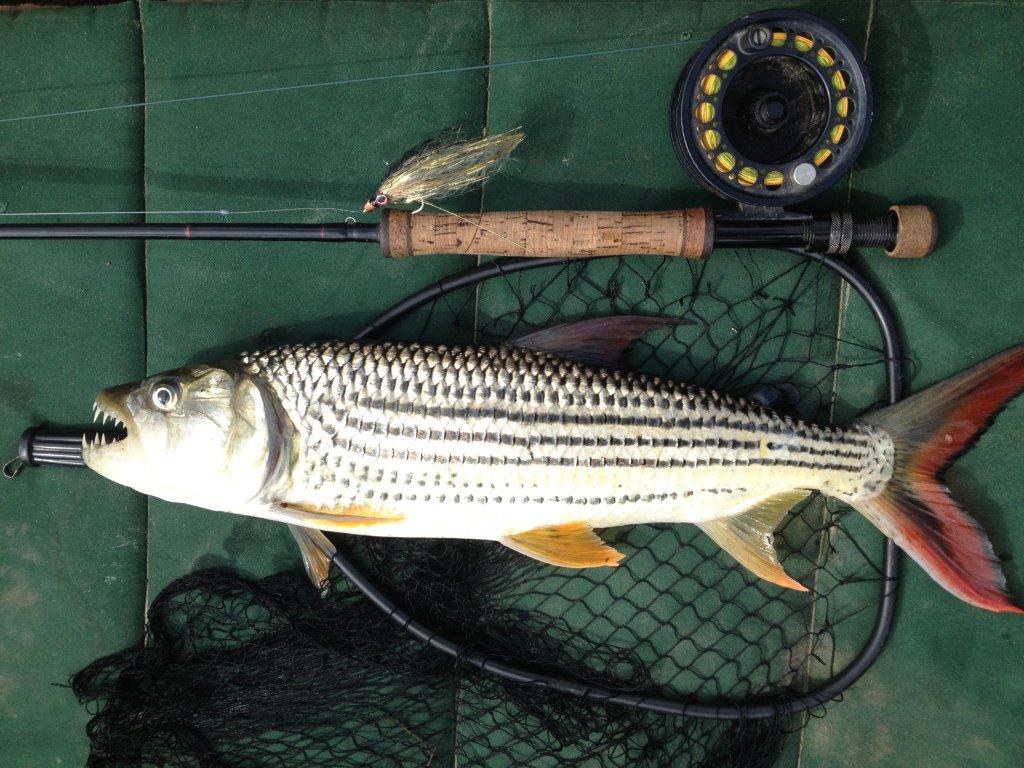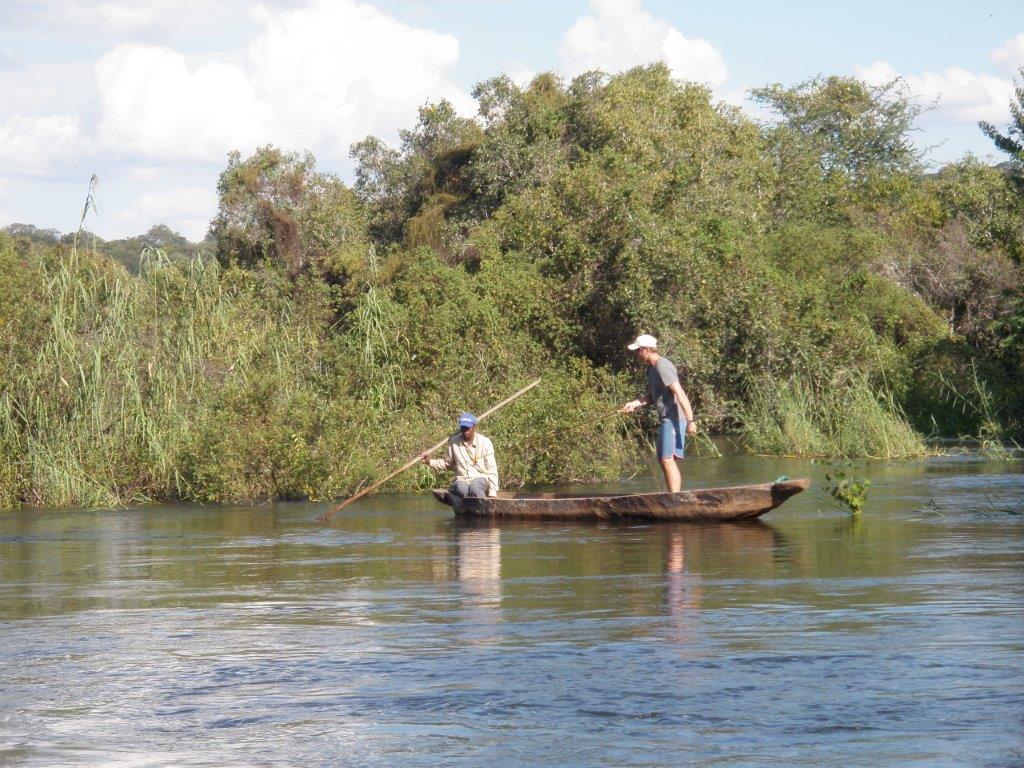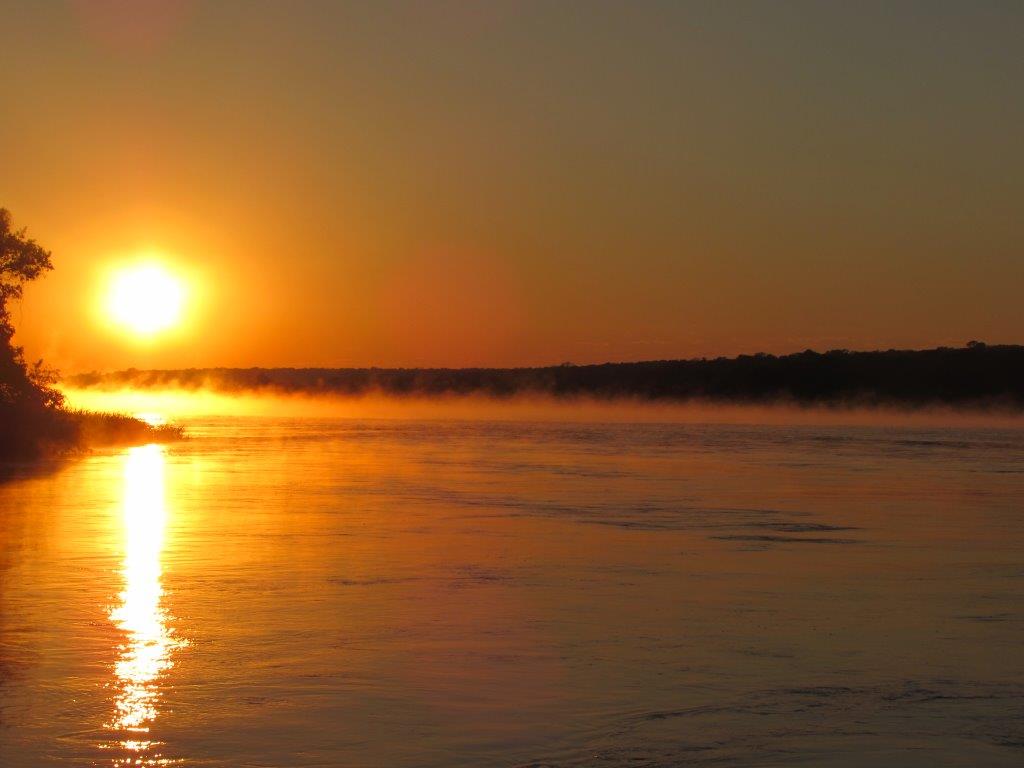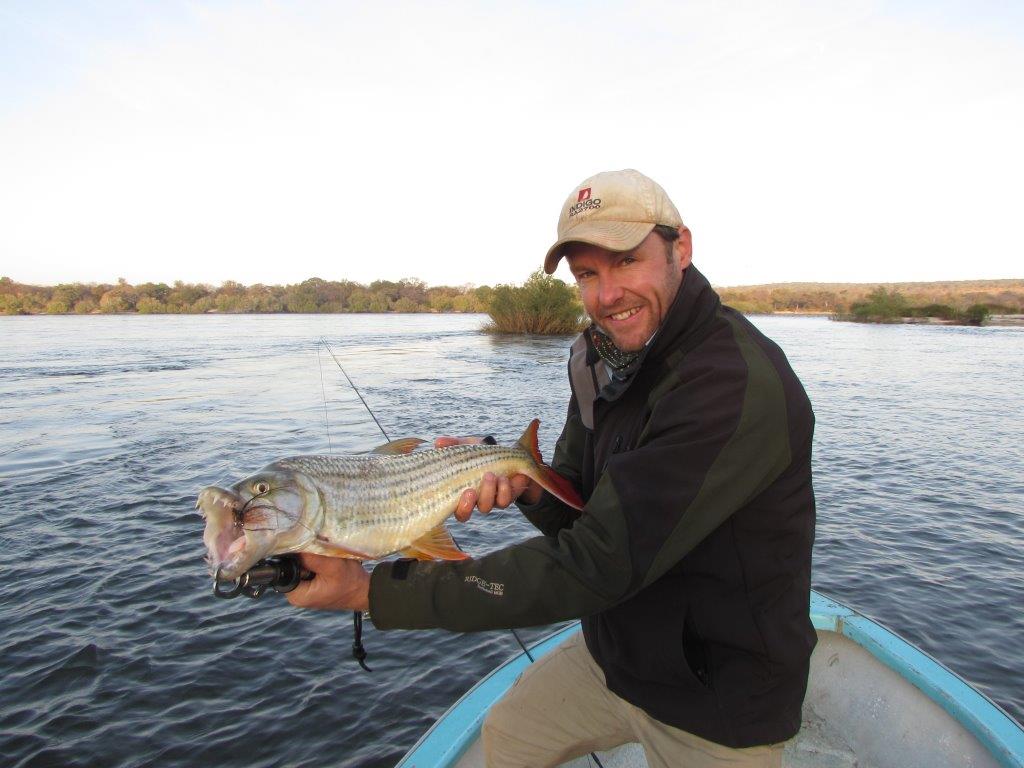
So you’ve done a bit of fishing and you’re looking for a little adventure. Does falling asleep at night to the sounds of lions, hyena and hippos sound appealing? Have you considered targeting tiger fish in Africa? Aren’t they those mean looking critters you saw on 'River Monsters' once? Yes, yes they are, in fact in the Democratic Republic of Congo they have goliath tiger fish, yet to be taken on fly I’m told and there is a good reason for that.
At the end of June this year I left my girlfriend to her yoga and beaches on the island of Zanzibar so I could return to the Zambezi River, Zambia to tempt some tigers on the fly. My destination was no cushy fishing lodge with fillet steaks and single malts on sundown, but it was perfect for me.
Bovu Island is approximately 150m wide by 700m long and is located about 50km upstream of the famous Victoria Falls, named by the famous Scottish explorer Sir David Livingstone in 1855, after his queen. The owner and manager of Jungle Junction, Brett, is a Zambian with Scottish roots. Once a safari guide in Botswana, he's now a very relaxed and generous host at his unique accommodation. With no mains power, candles provide light and gas powers the fridge for cold beers. Its more a very low key hostel than fishing lodge; Brett just happens to be keen on his flyfishing!
At that time of year the river is dropping daily as it acts as a drain for the enormous expanses of wetland further upstream. The inland delta regions upriver in Botswana are slowly drying out after the last rains of the season in April. This causes millions of small baitfish to make a perilous migratory dash downstream attempting to escape marauding catfish. The tigers don’t like to miss out on the feast and it’s a great time to strip wet flies in fast water.
It turned out that 2014 was a later than usual wet season and I arrived at Jungle Junction to find the river was effectively running a month higher than it should have been. I had that horrible feeling in my stomach - were four flights going to be worth it?
We headed off before sunrise the next morning in a 12 foot glass boat with a 30hp Honda powering us through the early morning mist. About 15km upstream lie the Katombora rapids. At this point the river is about 1.5km wide and the rapids 2-3km in length. Where the rocks began to emerge from the current, local villagers had placed handmade traps to capture baitfish as they had done for centuries. We tied up to some reeds and I lazily threw out my first cast.
Whack! What a hit! I'd never had a strike so hard before. First cast of the day and I was into a tiger of about 8 pounds. Brett was stoked for me and I just wanted to get it in the boat. I’d read too much about 1 in 10 hits translating to fish in the net. Tigers have hard jaws and big tails that generate great speed; this power feels unstoppable when they jet off downstream. More often than not tigers get airborne straight away and it's at this point most are lost. However they do tend to tire relatively quickly and after ten minutes we had a magnificent fish in the net.
The fact that fishing for tigers on the fly normally involves stripping wets may not appeal to all, however any angler would be impressed by their attitude when they hit a fly. There are parts of the Zambezi where dry fly fishing is successful. Lying in typical ambush locations behind rock ledges and aside sandbank drop-offs you can fish every cast with confidence, knowing that if you haven’t had some interest after 10-15 minutes and or a change of fly then its time to move on.
 A standard 3-4 lb specimen. Looking at the tail, you get an idea how they generate such power early in the fight. Using a short wire trace is recommended for obvious reasons!
A standard 3-4 lb specimen. Looking at the tail, you get an idea how they generate such power early in the fight. Using a short wire trace is recommended for obvious reasons!Despite landing 10 fish over three days, fishing mostly from wooden canoes, spotting hippos and regularly sighting elephants drinking on the shore, my most memorable moment came from a fish lost. Things had been quiet for over an hour and we were trying one last spot before heading home. Most tigers we'd encountered had averaged 3-4lb that morning, so my guard had been lowered. We tied up to some tall reeds and our small boat drifted about on the swirling eddies. Directly beneath us lay only a few feet of water, but the bottom dropped away to 20 feet on either side of the sand bar; perfect hunting grounds for these toothy beasts. I cast out across the current and let my slow sinking line get down to the drop off. I began a slow strip pattern that seems to be the preference of the bigger fish in these lies. Nothing after about eight strips signalled it was almost time to call it a day. Then… boom! The hit was so hard and fast it genuinely felt artificial, as if I’d hooked a passing bus. All I was able to do was to look about 40 metres downstream to see something in the vicinity of 12 pounds leap a metre in the air, shaking like it was on the wrong end of a Taser. That was the end of that. Fish off. As you do after these god-awful moments, you contemplate what went wrong. Did I strike too hard? Did I lift the rod when the fish got airborne? Etc,, etc. Who knows, the fish may not have been hooked properly in the first place.
 Balance is key when casting from a Mokoro (wooden canoe) or you might end up in the drink with the crocs and hippos.
Balance is key when casting from a Mokoro (wooden canoe) or you might end up in the drink with the crocs and hippos.What I do know is that fishing on the Zambezi is thrilling and spectacular and I will be returning to Africa at some stage. There are lots more options for the fly angler in Africa than I was aware of and most of them present plenty of challenges. Keep an eye on my new blog 'the nextfly' for further stories and details of my eight months spent in Africa this year.













